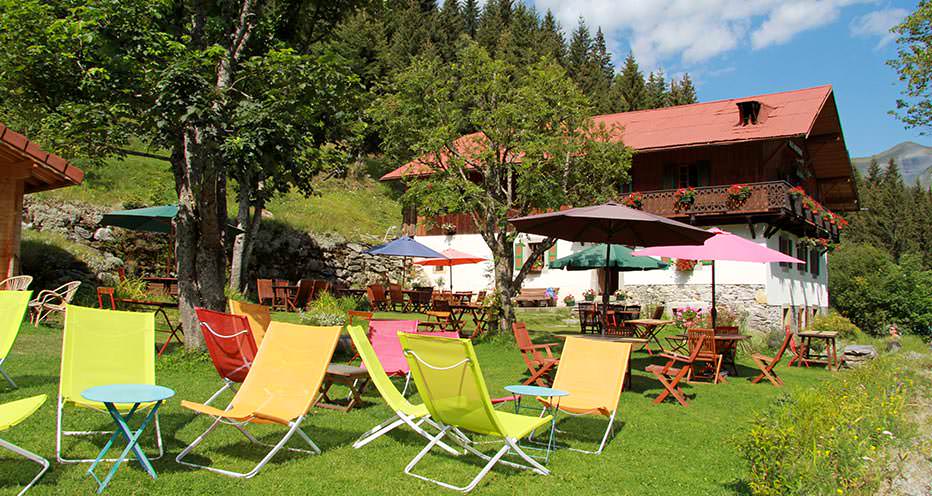
Camping on the TMB
Camping is the simplest and cheapest type of accommodation and there are campsites at every night stop on the TMB; a few are basic and others offer a full range of facilities. The most basic is at Les Chapieux where there is little-else than a cold tap and a public toilet. At most other campsites there will be hot showers and a small shop. Some have more facilities such as children’s play areas, basic restaurants, electricity, WIFI and even a small pool.
If you do choose to camp you need to be conscious that you will be carrying all your equipment which, apart from being heavy, will slow you down. And the longer the trek takes, the more it costs. You will need to bring all cooking gear, though it is pretty easy to pick up basic food supplies in the villages. Some tour operators offer ‘full-service’ camping where the tents and all your luggage is transferred by minibus or van to the next campsite. When considering these companies it is important to check what is and is not included: whether you have put up your tent and help put up the dining tent, whether you have to help with the cooking and washing up and the types of meals that you can expect.
Refuges on the TMB
Refuges or mountain huts were the traditional places to stay when either hiking on the Tour du Mont Blanc or climbing the high Alpine mountains. They offer simple, no-frills accommodation and follow a fairly similar model throughout the Alps. The key thing is that it means you don’t have to carry camping gear or sleeping bags. The sleeping arrangements are mixed-sex dormitory style accommodation and can range from 6 to 20 people sleeping side-by-side in one room. The bathrooms are large and communal. Refuges offer a cheaper way to hike on the TMB: most places will be 55-70 euros per night on a half-board basis, depending on the location. If you regard it as indoor camping, rather than one notch down from hotels, you should be able to cope with the experience.
However, you need to be confident that you can share a dormitory with a lot of other people and, if you are a light sleeper, this can prove very difficult: it will ruin your trek if you have sleepless nights. Ear plugs can be a real help. The refuges are generally clean and well-run, but be aware that the duvets and pillow cases tend to get washed every three days and so it is recommended that you take a sheet sleeping bag for your own comfort. There are a few refuges that offer twin rooms, but you need to look hard to find them and book well in advance. Showers are generally hot, though it pays to have one earlier in case they run out of hot water and you need to bring your own towel. Some trekkers like to do a mix of refuges and hotels.
Hotels on the TMB
There is a huge range of hotels in Chamonix and Courmayeur from bed & breakfasts to five-star establishments. Outside of these two towns and on the TMB, you will not really find anything above three-star. Most of them are family run – and have been for many generations – and some of them are very good. Some are also pretty poor and you need to be cautious with what you book.
Most reputable tour operators who run the TMB will offer a reasonable level of accommodation, but some will gloss over the downsides of some hotels. When looking at hotels, be sure to find out if there are attached bathrooms or whether you will be sharing with other people. If you are in a town, see if the hotel is on a busy road. If you want a double bed (matrimonial) make sure it is big enough for you and your partner. There are also numerous websites such as tripadvisor that review hotels, so you can make your own judgement on whether a hotel will suit you.
Most of the family-run hotels offer a reasonable level of comfort and service with a good breakfast and three-course dinner. The price will change from town to town (and between countries – Switzerland is very expensive).
As with the refuges, you could choose to carry all your own gear between hotels or go with a tour operator who transfers your main luggage from hotel to hotel.
 Tour du Mont Blanc
Tour du Mont Blanc